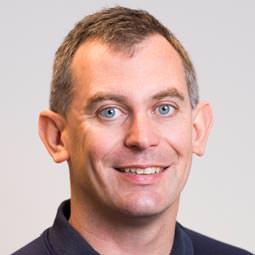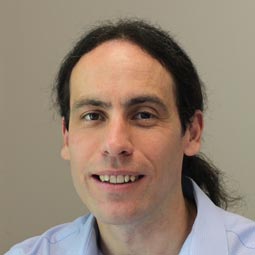Functional Nanostructures
Big, brave ideas inspired by biology
Imagine what you could create by combining the natural genius of biology with the latest advances in technology? Think of nature-inspired nanobots seeking out and destroying disease, bone implants that grow themselves, intuitive stem cell therapy, and handheld sensors that can instantly diagnose cancer.
Overview
Functional nanostructures are both inspired by biology and made using biological tools. In this research theme our Investigators use nanotools to examine processes that naturally occur in cells and take them outside the cell to use in a completely different context. In turn, materials are used to probe and influence biology.
Our research objectives
Objective 1: Synthesis and assembly
The first objective, which we achieved in the first three years of this programme, was about making basic functional units then assembling these into multi-functional products. We created new molecules with novel magnetic, electrical or optical properties.
Objective 2: Tools for the nanoscale
The second objective is developing innovative nanotools to better understand, manipulate and control these new functional nanostructured materials. The nanotools allow us to get more information about their behaviour and function on the nanoscale, so we can determine their relevance, for example, for stem cell therapies and cancer diagnoses.
The inspiration comes from biology. Nowhere is the power of self assembly, and the properties that emerge from this self assembly, more prominent than in biology.
Professor Bill Williams MacDiarmid Institute Principal Investigator Science Leader for Functional Nanostructures Massey University

Our projects
Below is an introduction to some of the projects we are working on within this research theme.
Improved health diagnoses and treatment
We are working on a number of projects aimed at improving health outcomes. We have developed a non-toxic nanomaterial to improve MRI (magnetic resonance imaging). Its magnetic and fluorescent properties may make it possible to analyse cancerous cells, increasing the likelihood of an earlier diagnosis.
We are also exploring the use of exosomes, which are tiny particles produced by most cells in our bodies. These particles are vital communication tools and could be used to carry molecules across the blood-brain barrier - a kind of biocamouflage drug delivery. This could give us a new route to diagnosing and treating a range of diseases.
In addition we are developing a new class of biosensors made from novel polymers that can conduct electricity. We’re using these biosensors for DNA diagnostics, an important tool in identifying infectious diseases, genetic mutations, or inherited metabolic disorders.
Nanosensing
One project in this area is the development of ultrasensitive analytical devices for real-time detection of the drug methamphetamine, such as for roadside testing. The devices use precisely-designed DNA aptamers, also known as synthetic antibodies, to rapidly recognise methamphetamine molecules from small, easy-to-take samples. Our new devices use nanotechnology to tackle these issues, reducing the cost of tests, and making them faster and more reliable.
Sally Brooker - environmentally-friendly plastics
Professor Sally Brooker of the MacDiarmid Institute and the Universtiy of Otago is using metal catalysts to develop cheap, environmentally-friendly plastics for use in a host of applications.
SAVVY Express: Science Media Centre - MacDiarmid Institute
February 23, 2015
More information
If you want to find out more, visit the following sections of our site:
Out of the Lab
Since the MacDiarmid Institute of Advanced Materials and Nanotechnology opened in 2002, our scientists and their collaborators have developed many exciting innovations to aid our transition to a more sustainable lifestyle. Some have been patented, some are in the field-testing stage and others have gone on to be produced and marketed.
Into the Marketplace
The aim of materials science and nanotechnology research at the MacDiarmid Institute is to positively transform people's lives and to benefit New Zealand. We partner with existing businesses to solve their materials science problems and take our innovations into the marketplace
Emeritus Investigators
Principal Investigators
Associate Investigators
New Zealand needs to focus on making things that are relatively specialised. We need to make fewer very sophisticated things with greater individual value.
Professor Roger Reeves MacDiarmid Institute Emeritus Investigator University of Canterbury

























